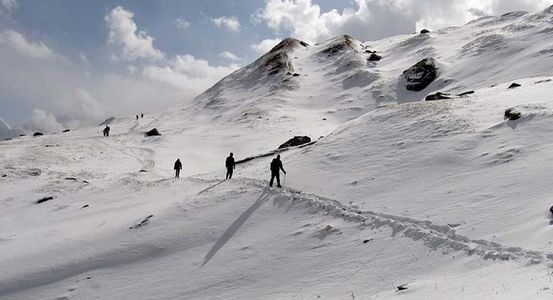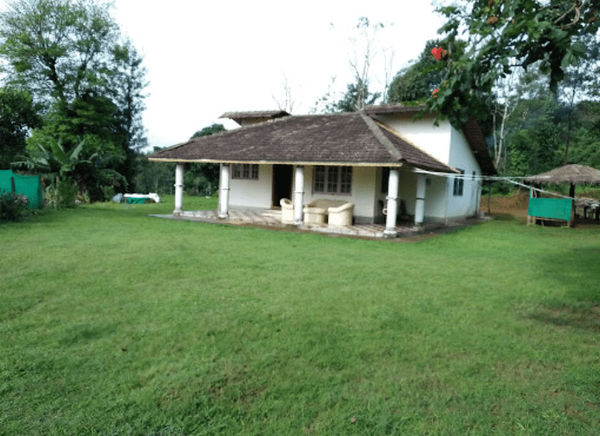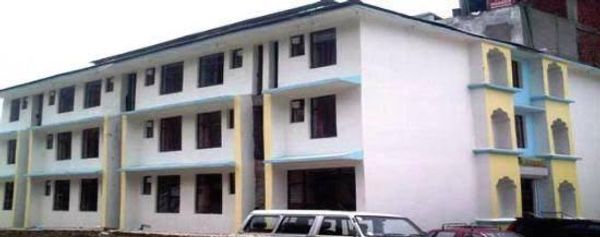The Best Season to See Snow on Kuari Pass Trek
 Birendra Bisht
16 Oct, 2024
11 mins read
1805
Birendra Bisht
16 Oct, 2024
11 mins read
1805

Kuari Pass, one of the most scenic treks in the Indian Himalayas, transforms into a stunning winter wonderland during the snow season. Known for its panoramic views of the Nanda Devi, Dronagiri, and other towering peaks, Kuari Pass attracts adventurers who seek the thrill of trekking through snow-covered trails. The snow adds a magical charm to this already captivating trek, making it a must-do for anyone looking to experience the raw beauty of the Himalayas. But to witness this spectacle in its full glory, timing is key.
Kuari Pass Trek: A Winter Wonderland
The Kuari Pass trek, located in the Garhwal region of Uttarakhand, is often referred to as the "Curzon Trail" because it was first traversed by Lord Curzon in the early 20th century. It has since become one of the most popular treks in India, especially in winter when the trail is enveloped in snow. The trek offers magnificent views of some of the tallest Himalayan peaks, and the snow adds an extra layer of tranquility and beauty to the landscape.
If your goal is to experience snow on the Kuari Pass trek, choosing the right season is essential. Snow not only enhances the visual appeal but also elevates the adventure quotient of the trek. From shimmering pine forests to pristine alpine meadows blanketed in white, Kuari Pass in winter is an experience like no other.
When Does Snowfall Begin on the Kuari Pass Trek?
Snowfall on the Kuari Pass usually begins in late November or early December, with the snow staying on the trail until March. The months of December through February are when the snow is at its heaviest, making this the ideal period for snow lovers. By late November, the higher reaches of the trek begin to receive light snowfall, and as the winter progresses, the snow starts to thicken, turning the entire region into a winter paradise.
For those looking for the best snow conditions, December and January are the peak months when you can expect thick blankets of snow, especially at higher altitudes. The snow begins to taper off by March, but remnants of winter can still be seen at the upper reaches of the trek.
Why December to February is the Best Time to See Snow
December to February is considered the best time to witness snow on the Kuari Pass trek because this is when the snow is both fresh and abundant. During these months, the lower sections of the trek, which are usually covered in forests, also receive snowfall, making the entire trail a winter wonderland.
December marks the start of winter, and by mid-December, the snow starts to pile up. January is when the snow is at its deepest, providing trekkers with the quintessential winter trekking experience—crisp white landscapes, frozen streams, and snow-covered pine forests. February is slightly warmer but still offers enough snow to make the trek challenging and visually spectacular.
What Makes the Kuari Pass Trek Special in Winter?
Winter transforms the Kuari Pass trek into something truly magical. The snow-covered landscape offers an otherworldly beauty, with towering mountains like Nanda Devi, Kamet, and Dronagiri providing a dramatic backdrop against the white expanse of snow. The trail, lined with dense oak and pine forests, looks even more stunning when draped in snow, creating an enchanting atmosphere that feels completely removed from the hustle and bustle of everyday life.
As you ascend through the forested sections, the trek opens up to vast meadows, such as the famous Gorson Bugyal, which in winter become immense stretches of snow. These alpine meadows, set against the backdrop of the Himalayan giants, are the highlight of the trek in winter, offering picture-perfect views at every turn.
Challenges of Trekking Kuari Pass in the Snow
While trekking Kuari Pass in winter is a surreal experience, it does come with its own set of challenges. Trekking in snow can be physically demanding due to the added weight of snow gear and the energy required to walk through thick snow. The cold temperatures, especially at night, can also make the experience more challenging for those unaccustomed to winter trekking.
Essential Gear for a Snowy Kuari Pass Trek
- Warm Layers: Dressing in layers is crucial for maintaining body warmth. Start with thermal base layers, followed by fleece, and top it off with an insulated jacket.
- Snow Boots: High-quality, waterproof snow boots are essential for keeping your feet dry and warm in deep snow.
- Trekking Poles: These provide additional stability, especially when navigating through snow and ice.
- Gaiters: Gaiters will help prevent snow from entering your boots, making your trek more comfortable.
- Four-Season Sleeping Bag: Since temperatures can drop significantly at night, a warm sleeping bag is essential for a good night’s rest.
Safety Tips for Winter Trekkers
- Physical Fitness: Trekking in snow requires a good level of physical fitness. Regular exercise and stamina training prior to the trek can help you handle the snowy terrain better.
- Pace Yourself: The presence of snow can slow down your pace significantly. It’s important to take your time and avoid rushing through the trail.
- Hydrate Often: Even though it’s cold, staying hydrated is important. Dehydration is a common issue during winter treks as the cold masks the sensation of thirst.
Best Routes and Campsites for Snow Viewing on the Kuari Pass Trek
The traditional Kuari Pass trek starts from Joshimath and follows a well-marked trail through scenic villages, dense forests, and vast meadows. During the snow season, certain sections of the trail become particularly enchanting.
- Auli to Gorson Bugyal: This is one of the most scenic sections of the trek, especially in winter. Starting from the ski town of Auli, trekkers make their way through a dense forest before reaching the vast Gorson Bugyal, which in winter becomes a sparkling expanse of snow. This section offers breathtaking views of Nanda Devi and Dronagiri.
- Tali Top and Kuari Pass Summit: The trek from Tali Top to Kuari Pass is the final stretch and perhaps the most rewarding part of the journey. The trail ascends through snow-covered ridges and offers panoramic views of the surrounding peaks. The summit of Kuari Pass, at 12,516 feet, provides an awe-inspiring view of the snow-clad Garhwal Himalayas, making the effort worthwhile.
Planning Your Kuari Pass Trek: Weather and Logistics
If you plan to trek Kuari Pass during the snow season, it's important to be prepared for cold weather and potentially challenging conditions. Winter temperatures in the region can drop as low as -8°C at night, especially at higher altitudes. Daytime temperatures are more moderate, but the wind chill can make it feel much colder.
The trek typically takes 5 to 6 days, with most itineraries starting from Joshimath. From there, trekkers make their way to Auli, which is the base for the trek. Joshimath is well connected by road to Haridwar and Dehradun, which have rail and air links to major cities.
Flora and Fauna in Winter
Despite the cold, the winter season in Kuari Pass offers glimpses of wildlife. Trekkers might spot footprints of snow leopards, although the animals themselves are elusive. Birds like the Himalayan Monal and pheasants add splashes of color to the snowy landscape. The oak and pine forests are particularly beautiful in winter, with branches heavy with snow.
Conclusion
The Kuari Pass trek during the snow season is an unforgettable adventure, offering trekkers the chance to experience the Himalayas at their most majestic. From December to February, the snow-covered landscapes of the Garhwal region provide an awe-inspiring backdrop for this moderately challenging trek. Whether you're an experienced trekker or a beginner looking for an introduction to winter trekking, Kuari Pass in winter is the perfect destination for a snow-filled Himalayan adventure.
Written By:
Birendra Bisht



Hotels at your convenience
Now choose your stay according to your preference. From finding a place for your dream destination or a mere weekend getaway to business accommodations or brief stay, we have got you covered. Explore hotels as per your mood.





